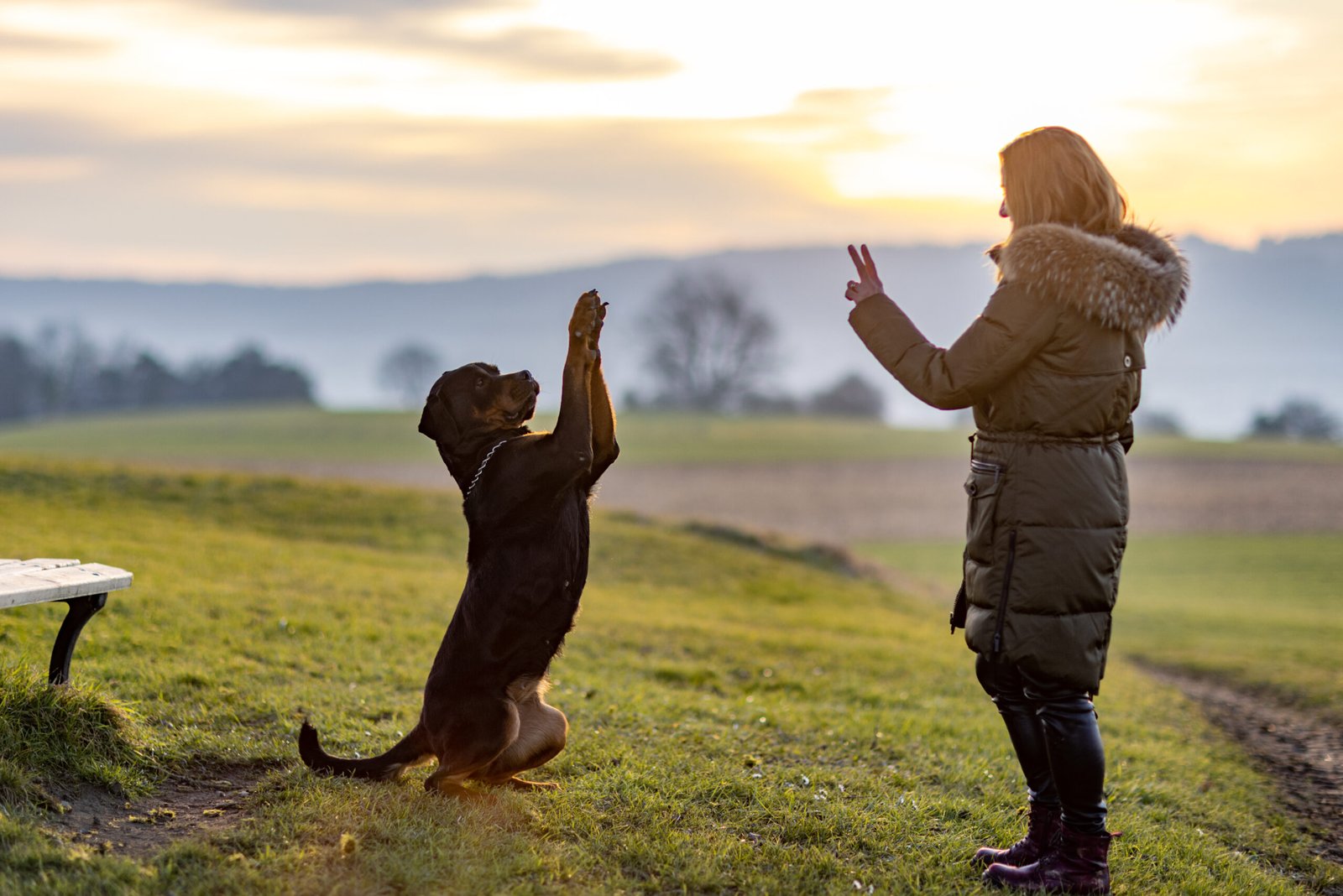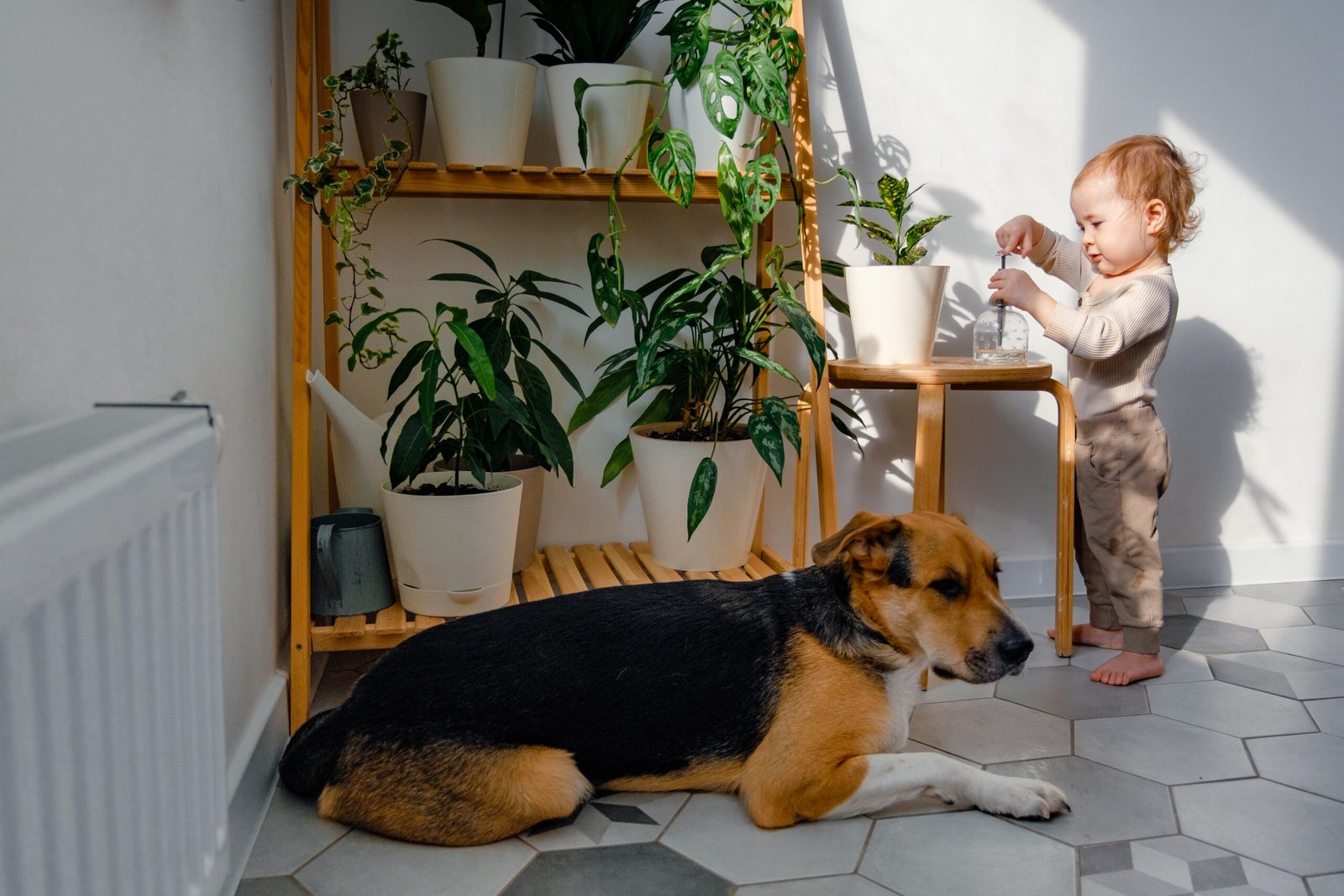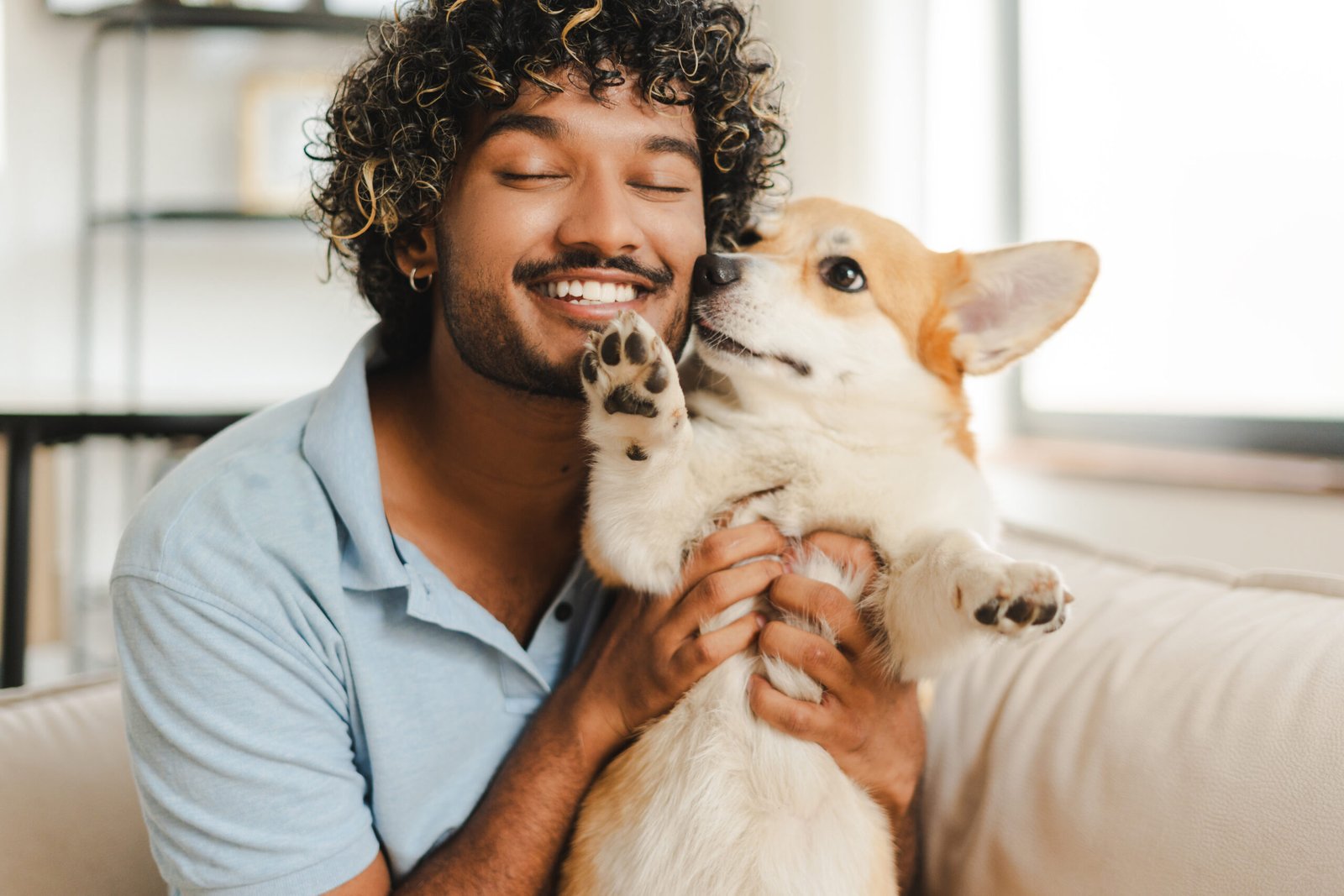Introducing a pup into your life promises joy, companionship, and shared adventures. However, to ensure a harmonious relationship, proper training is critical. Basic Obedience Training for Dogs: Where to Start is not just about teaching your puppy to follow commands—it’s about building a foundation of trust and respect that will strengthen the bond between you and your furry friend. From understanding the first simple commands to choosing the right environment for training, this guide covers everything you need to set your pup on the path to good behavior.
Basic Obedience Training for Puppies: Where to Start
When embarking on the journey of basic obedience training with your pup, beginning with simple commands like “sit,” “stay,” and “come” is essential. These commands are the building blocks that form the foundation of all future obedience training. Starting with these simple instructions ensures that your puppy understands and responds appropriately, creating a language of communication between you both.
Engaging your puppy with positive reinforcement is crucial during training. This approach encourages good behavior by rewarding the puppy with treats, praise, or play. By associating the reward with the action performed, puppies learn to focus and respond eagerly. To maintain this positive environment, it’s important to keep training sessions short and engaging, preventing frustration and ensuring that your pup remains attentive and excited to learn.
– Initiate training with the “sit” command, which teaches control and attention.
– Use “stay” to help your puppy manage impulse control.
– Introduce “come” for safety and recall, especially in open spaces.
– Use treats and praise as rewards for successful command execution.
– Conduct sessions lasting 5 to 10 minutes, gradually extending as the puppy progresses.
Consistency is the cornerstone of effective obedience training.
Obedience Training Stages
| Stage | Age Range | Primary Focus | Common Commands | Key Tips |
|---|---|---|---|---|
| Early Puppy Training | 7-14 weeks | Basic socialization, exposure to various environments | “Sit,” “Stay,” “Come” | Use positive reinforcement, keep sessions short (5-10 minutes), and introduce gentle handling. |
| Puppy Socialization | 8-12 weeks | Interaction with other puppies and new people | “Down,” “Leave it,” “Focus” | Enroll in puppy classes for structured socialization; reward calm interactions and discourage fearful reactions. |
| Basic Obedience | 3-6 months | Learning control, impulse management | “Sit,” “Heel,” “Wait” | Gradually add distractions, extend session duration, and encourage focus using treats and praise. |
| Intermediate Obedience | 6-12 months | Reinforcing skills with longer durations and distractions | “Heel,” “Place,” “Stay” | Introduce new environments, use varied rewards, and practice commands in real-life settings. |
| Advanced Training | 12 months+ | Off-leash reliability, advanced commands | “Recall,” “Go to Spot,” “Stay” | Aim for consistent performance in complex environments; practice regularly with minimal reward to sustain obedience. |
| Behavioral Adjustments | Varies | Addressing specific behavioral challenges | Custom (e.g., “Quiet”) | Collaborate with a trainer or behaviorist if needed, and tailor commands to reduce anxiety or aggression. |
Make sure everyone in the household uses the same cues to avoid confusion. Regular practice reinforces learning and helps your puppy retain commands, making them instinctive responses over time. It’s also beneficial to introduce distractions gradually, so your puppy learns to obey commands in varying environments. This flexibility ensures that the training is practical and applicable anywhere, enhancing both your puppy’s adaptability and behavioral reliability.
Puppy Training: Home or Away?
Deciding whether to train your puppy at home or to enroll them in a professional class can influence the efficiency and effectiveness of the training process. Each approach comes with its own set of advantages and challenges. Home training provides a personal touch, allowing you to cater sessions to your dog’s unique personality and household dynamics. Meanwhile, professional classes offer structured environments where experienced trainers can address specific behavioral issues.
Training at home can foster stronger bonding moments as you both learn to understand each other’s signals and work in your shared space. Convenience is a significant benefit, along with the ability to tailor the sessions around your schedule. However, professional classes bring valuable insights from skilled trainers, who can offer strategies and solutions to more complex behavioral challenges. This structured setting also promotes socialization as your pup interacts with other dogs and adheres to group discipline.
– At-home training accommodates your puppy’s unique needs in a familiar setting.
– Professional classes offer exposure to group obedience and socialization.
– Consider your own expertise and flexibility when choosing the training method.
– Balance both approaches for comprehensive results, reinforcing skills at home with professional guidance.
– Evaluate your pup’s temperament and the specific goals you have for training.
Combining both home and professional methods can yield the most beneficial results. You get the personalized touch and bonding time of home training, while professional course settings offer a disciplined environment and professional insights. This approach ensures your puppy receives a well-rounded education, incorporating both comfort and challenge into their learning experience.
Choosing an Obedience Training Instructor
Selecting a knowledgeable and effective obedience training instructor can significantly influence the success of your puppy’s education. Recommendations are a great starting point; connect with trusted sources like veterinarians, fellow dog owners, or local pet communities to identify reputable instructors. It’s vital to ensure that any instructor holds proper certifications from recognized organizations, such as the Association of Professional Dog Trainers (APDT) or the Certification Council for Professional Dog Trainers (CCPDT).
Visiting a class in session can give you a feel for the instructor’s teaching style and interaction with dogs. Observe their ability to maintain a calm but engaging environment while using humane and effective training methods. Positive reinforcement should be the primary technique used, as it has been shown to be more successful in fostering obedience and trust than punitive measures. The size of the class also matters; smaller classes often mean more personalized attention for your pup.
– Seek recommendations through vet clinics, pet communities, and dog parks.
– Verify certifications from APDT, CCPDT, or similar authorized bodies.
– Attend a trial class to assess the instructor’s style and rapport with dogs.
– Ensure the primary use of positive reinforcement in their methods.
– Opt for smaller class sizes to enable focused learning sessions.
A well-qualified instructor will not only teach your dog new skills but will also empower you with the knowledge and tools to continue effective training at home. Ensuring your chosen instructor aligns with your training goals and respects your dog’s temperament is crucial for a harmonious and productive training experience.
Trainer vs. Behaviorist
Understanding whether your pup needs a trainer, a behaviorist, or both can make a remarkable difference in your dog’s obedience and behavioral transformation. Trainers and behaviorists serve different roles: trainers specialize in teaching commands and enhancing obedience, while behaviorists delve into the root causes of behavioral issues.
Trainers use positive reinforcement to make learning enjoyable, instilling good habits while discouraging undesirable ones. They are perfect for puppies beginning their training journey, introducing basic commands and skills. Conversely, behaviorists investigate and address the underlying causes of behavioral problems, such as anxiety, aggression, or compulsions, by considering factors like environment, genetics, and past trauma. In some cases, collaboration between a trainer and behaviorist can provide comprehensive and nuanced solutions.
– Trainers focus on command learning and positive reinforcement.
– Behaviorists analyze causes of behavioral issues and offer therapeutic strategies.
– Consider both roles if your dog displays complex behavior patterns or persistent issues.
– Start with training to learn essential commands and evaluate if deeper behavior intervention is needed.
– A combination of both can maximize training outcomes and resolve underlying behavioral challenges.
Engaging with both a trainer and behaviorist can cover all aspects of your dog’s development. Begin with straightforward obedience training to build a foundation, then bring in a behaviorist if deeper behavioral issues persist, ensuring a happy and well-adjusted pup.
Types of Obedience Training Classes
Obedience training classes come in various levels, each designed to cater to dogs at different stages of learning and with varying needs. Puppy Kindergarten focuses on foundational skills and early socialization, crucial for young dogs to adapt and learn proper interaction with other dogs and humans. For dogs who need to learn control and communication, Basic Obedience Classes teach commands like sit, stay, and come.
Progressing to Intermediate Obedience Training enhances these skills by introducing more complex tasks and reinforcing behaviors in a variety of settings. Advanced Obedience Classes are suited for dogs that have mastered the basics and are ready for more challenging off-leash training and precise command obedience. Meanwhile, Behavioral Modification Classes target specific issues such as aggression or anxiety and offer personalized approaches to address them.
– Puppy Kindergarten emphasizes social skills and playful command introduction.
– Basic Obedience provides structure and communication between you and your dog.
– Intermediate Classes expand on skills in distracting environments.
– Advanced Training focuses on off-leash mastery and complex command sequences.
– Behavioral Modification addresses specific issues, with personalized tactics for resolution.
Selecting the right type of class depends on your dog’s current skill level and any behavioral issues they may exhibit. Progress through the classes as your pup masters each level, providing them with a robust and flexible training experience that adapts to their growing abilities and behavioral needs.
Obedience Training Equipment
Obedience training equipment serves as a bridge between you and clear communication with your dog during sessions. The right tools can enhance your dog’s learning process, making the training more effective and enjoyable. Essentials such as leashes, collars, and clickers aid in teaching basic commands, helping to establish a direct connection between commands and actions.
Choosing equipment that suits your dog’s size, breed, and temperament is paramount to ensuring safe and comfortable training experiences. The strategic use of these aids, combined with consistency in practice and praise, can help build a strong obedience foundation. It’s essential to incorporate tools with positive reinforcement; never rely solely on equipment, as the goal is to foster a trusting relationship based on understanding and respect.
– Use a collar and leash for restraint and to facilitate command follow-through.
– Clickers provide auditory cues signaling correct behavior.
– Choose equipment that fits comfortably to avoid discomfort or injury.
– Introduce each tool gradually, accompanying its use with positive reinforcement.
– Maintain regular praise and rewards alongside equipment to strengthen associations.
When employed correctly, training equipment can complement your methods and accelerate learning. Always remember that the heart of training lies in the relationship you cultivate with your dog, with equipment acting as a supportive extension of your guidance.
Puppy Handling and Socialization
Early puppy handling and socialization are essential elements in shaping a confident, well-adjusted dog. Introducing your puppy to various environments, people, and other animals early on promotes adaptability and resilience. These experiences are integral in preventing future behavioral problems and enhancing the outcomes of obedience training.
Socialization helps your puppy become comfortable with different scenarios, reducing the likelihood of anxiety and aggression as they grow. Creating positive experiences during handling and introductions is crucial; this involves gentle exposure to new situations without overwhelming the pup. Recognizing signs of stress and adjusting your approach can ensure that socialization remains a beneficial, positive part of their development.
– Expose puppies to a variety of settings and individuals gradually.
– Monitor stress levels, adjusting exposure according to comfort.
– Create positive associations with new experiences using treats or play.
– Encourage gentle handling to build trust and tolerance to touch.
– Utilize group puppy socialization classes for structured interaction.
Socialization and handling not only prepare your puppy for a range of experiences but also form the baseline for a lifetime of learning and enjoying new adventures. Establishing these positive foundations ensures a well-rounded, versatile pet, ready to integrate seamlessly into family life and society.
Recognize Common Dog Training Problems
Even with the best intentions, you may encounter common problems during dog training. These challenges can hinder progress and create frustration for both you and your pet. Inconsistency in commands, lack of patience, and timing issues can convey mixed signals, hindering your dog’s learning process. Identifying these hurdles early on is essential for course correction.
A common pitfall is an over-reliance on treats, leading the dog to obey only when rewards are assured. To avoid this, clarity in communication and reinforcing commands without treats is crucial. Distractions also pose a challenge, as dogs often struggle to focus. Developing a structured routine helps maintain focus, providing stability and a consistent learning environment.
– Use clear and consistent commands to avoid any confusion.
– Balance reinforcement with varied rewards, gradually reducing reliance on treats.
– Eliminate distractions during training or use them as learning tools gradually.
– Keep sessions calm and structured with a routine to foster discipline.
– Maintain patience; progress can vary depending on the dog’s temperament and learning style.
Addressing these challenges with patience and strategy can significantly enhance your dog’s learning experience, leading to a better-behaved and attentive pup. By understanding and mitigating these issues, you can ensure a seamless and productive training journey.
Be Consistent
Consistency is the bedrock of successful obedience training. Establishing a regular regimen of training sessions reinforces learned behaviors, making them second nature to your dog. Consistent commands and cues crucially avoid confusion, ensuring that your dog understands and remembers what is expected. Reinforcing positive behavior steadily encourages repetition, gradually shaping the desired habits in your dog.
To build trust and understanding, maintain a calm demeanor throughout training. This consistency in mood and expectation helps your dog feel secure, knowing what to expect and what is expected in return. While progression may sometimes be slow, patience, and perseverance in your training routine will yield rewarding results over time.
– Schedule regular training sessions to bolster retention and behavior reinforcement.
– Use identical commands and cues to provide clear, understandable communication.
– Consistently reward positive behavior to promote habitual good actions.
– Keep your demeanor steady and reassuring to build trust.
– Persist with patience; consistency brings about successful training gradually.
Don’t Forget Rewards
Incorporating rewards is central to fostering enthusiasm and eagerness in dog training. Positive reinforcement techniques such as treats, toys, or verbal praise serve to motivate your dog while reinforcing obedience. By consistently rewarding good behavior, your pup learns to associate the command with a positive outcome, promoting the repetition of the desired action.
Tailor the type and frequency of the rewards based on your dog’s preferences and the stage of their training. As your pup progresses, gradually reduce the reliance on rewards to foster intrinsic motivation, transitioning to intermittent reinforcement. This approach solidifies learned behaviors, instilling an understanding that obedience is expected, with or without an immediate reward.
– Use treats, toys, or praise as motivators in obedience sessions.
– Adapt rewards to align with your dog’s likes and training milestones.
– Consistent rewarding forms a strong action-reward relationship.
– Gradually lessen rewards as your dog displays consistent command compliance.
– Shift towards occasional reinforcement, enhancing long-term behavior retention.
Types of Rewards in Dog Training
| Reward Type | Description | Ideal Usage | Examples | Pros | Cons |
|---|---|---|---|---|---|
| Food Rewards | Treats given immediately after the correct behavior | Useful for early training and challenging tasks | Small treats, kibble | High motivation for most dogs; easy to carry and give | May cause dependency on treats; some dogs may lose interest if overused |
| Verbal Praise | Positive words to encourage and reinforce behavior | Anytime during or after task completion | “Good job!”, “Yes!” | Easy to provide; can be used anywhere; helps bond with handler | Some dogs may need additional reward types to maintain motivation |
| Physical Affection | Pets, belly rubs, or gentle pats | Best for reinforcing calm, well-behaved actions | Belly rub, head scratch | Builds emotional bond; ideal for affectionate dogs | Can overstimulate some dogs; may not be effective during high-energy activities |
| Toy Rewards | Use of toys to reward correct behavior and add excitement | Effective in play-based or high-energy training | Fetch toys, squeaky toys | High excitement; useful for active, playful dogs | Can be distracting; might lead to possessiveness over toys |
| Clicker | A click sound to signal a reward will follow, used for precise reinforcement | Ideal for learning new commands or behaviors | Small handheld clicker | Helps dog understand timing of reward; highly effective when paired with treats or toys | Requires training to link click with reward; extra tool to carry |
| Freedom/ Play Time | Allowing breaks or play as a reward for completing a task | Best for energetic dogs needing physical outlets | Running in a yard, short play sessions | Encourages completion of tasks to earn free time; useful for dogs that crave movement | Not suitable in confined or public spaces; timing must be managed to prevent overstimulation |
Obedience is for All Dogs
Obedience training is not limited by a dog’s breed, age, or size; it lays the foundation for good behavior and a harmonious relationship between the owner and pet. Consistent commands and practice strengthen the owner-dog bond, enhancing communication and understanding. Furthermore, basic obedience training contributes to safety both for the dog and its environment, creating well-adjusted pets who behave reliably in various settings.
Essential commands like sit, stay, and come form the cornerstone of this training, and every dog should master these regardless of their specific needs. For more extensive training, professional trainers and resources can offer specialized guidance. Ultimately, obedience training fosters a thriving environment where both the dog and owner enjoy companionship enriched by mutual respect and cooperation.
– Obedience applies to all dog breeds, ages, and sizes consistently.
– Strengthens the bond between owner and dog through structured interaction.
– Increases safety by instilling reliable behavior in various scenarios.
– Foundational commands are critical for every dog’s toolkit.
– Seek professional guidance for customized training solutions.
At What Age Should I Start Basic Obedience Training with My Dog?
Embarking on the journey of obedience training with your dog is a significant step towards fostering a harmonious relationship between you and your furry friend. This foundational step not only teaches your pup essential commands but also builds a bond of trust and communication. But the question remains: at what age should you begin this training?
Puppy Stages and Learning Windows
The early weeks and months of a dog’s life are crucial for their development. Puppies are most receptive to learning between the ages of 3 and 14 weeks, a phase known as the “socialization period.” During this time, they are exceptionally dynamic in absorbing new experiences, including exposure to different environments, people, and basic commands. It’s during this critical period that many trainers advocate introducing basic obedience practices.
Starting Early: Ages 7-8 Weeks
From as early as 7-8 weeks, puppies are capable of beginning basic obedience training. At this tender age, they possess remarkable learning capabilities and a curiosity that makes them receptive to commands and training. Simple commands such as “sit,” “stay,” “come,” and “down” can be introduced alongside positive reinforcement techniques like treats, praise, and play. The emphasis here should be on consistency, patience, and positive reinforcement as puppies are naturally energetic and may have short attention spans.
The Role of Puppy Classes
Some pet owners opt to enroll their puppies into group puppy classes around 8-12 weeks of age. These classes not only focus on obedience but also on socialization, enabling puppies to adapt to group settings and to learn important cues amid distractions. Puppy classes are particularly beneficial if the owner is seeking professional guidance or wishes to enhance the puppy’s social skills with other dogs and people.
Adolescence and the Training Reinforcement: Ages 6 months and Older
Puppy adolescence, beginning around 6 months old, is another wave in a dog’s learning journey. During this time, dogs start testing boundaries, and their behavior may become unpredictable as they experience hormonal changes. It is crucial during this stage to continue reinforcing obedience training consistently to solidify the routines and exercises learned during the puppy phase.
Never Too Late: Training Adult Dogs
While starting young is ideal, it’s important to note that it’s never too late to start basic obedience training with an adult dog. Older dogs can certainly learn new tricks; the key is to adjust the training to fit their temperament and past experiences. Adult dogs might require a different approach, often involving more patience and slower introduction to commands. Nevertheless, with commitment and positive reinforcement, older dogs can achieve significant progress in obedience training.
Tailoring to Individual Needs
Each dog is unique, and factors such as breed, temperament, and previous experiences can influence when and how you implement training. While some breeds might require a more delayed start due to slower maturity, others might exhibit readiness earlier on.
What are some fundamental commands I should teach my dog in basic obedience training?
Teaching your dog basic obedience commands is an essential step in nurturing a strong bond and ensuring a harmonious life together. These fundamental commands lay the groundwork for safety, effective communication, and enhanced control in various situations. Here’s an expanded look at some of the essential commands you can start with:
1. Sit
The “sit” command is often the starting point for many training regimens due to its simplicity and the control it establishes. Teaching your dog to sit on command can:
– Help in managing impulsive behavior, ensuring your dog remains calm when meeting new people or in bustling environments.
– Provide an opportunity for your dog to earn rewards and positive reinforcement, fostering a trust-filled relationship.
Training Tip: Use treats as a guide by placing them slightly above your dog’s nose and moving back towards their tail. As their head follows the treat, their hindquarters will naturally lower into a sitting position. Consistently using a hand signal in conjunction with the verbal cue can enhance your dog’s understanding.
2. Stay
Once your dog has mastered “sit,” the “stay” command is the next logical step. This command enhances your dog’s focus and patience over time. It’s crucial for:
– Ensuring your dog’s safety in open areas like parks or near roads.
– Developing their self-control, as the dog learns to resist distractions and maintain its current position until released.
Training Tip: Begin with short distances and durations. Gradually increase the challenge by adding more distractions and lengthening the duration as your dog becomes more proficient. Always return to your dog before releasing them with a cue like “okay” or “release.”
3. Come
Reliability with the “come” command is not just convenient—it’s potentially lifesaving. A strong recall can:
– Prevent dangerous encounters, such as running towards a busy road or unfriendly animals.
– Enable off-leash activities and exploration in suitable environments, fostering your dog’s physical health and mental stimulation.
Training Tip: Use enthusiastic and inviting tones when calling your dog. Start training in enclosed spaces and praise lavishly when they return to you. Gradually increase the distance and complexity of the environment as their recall responds.
4. Down
Teaching your dog to lie down on command is another versatile tool in obedience training. The “down” command:
– Promotes calmness and is especially useful in distracting or tense situations.
– Serves as a precursor for more advanced training exercises, enhancing overall discipline.
Training Tip: Begin the process by tempting your dog with a treat held close to their nose. Move your hand straight down between the paws, encouraging them to follow the treat to the floor. This process usually results in a lying position. Consistency in command words and tone will aid in faster learning.
How much time should I dedicate to training my dog each day for effective results?
Training your dog is an integral part of ensuring a harmonious household and fostering a strong bond with your furry friend. But how much time should you dedicate to daily training to achieve effective results? Striking the right balance in your training schedule is crucial to keep your dog engaged, motivated, and eager to learn. Here’s a breakdown of effective strategies to allocate your time wisely:
Short, Focused Sessions
1. Duration: Ideally, training sessions should be kept short and sweet—about 5 to 15 minutes per session. Dogs, especially puppies, have short attention spans and can become easily distracted or fatigued. Keeping sessions brief helps maintain their focus and interest.
2. Frequency: Instead of one long session, aim for several mini sessions throughout the day. For example, three to five short sessions will often be more effective than a single long session. This approach helps reinforce learning and allows your dog to process and retain new commands.
3. Consistency: Consistency is key in dog training. Incorporate training into everyday activities. For example, practice commands like “sit,” “stay,” and “come” during meal times, walks, or play. This ensures your dog receives ample repetition and learns to obey in various environments.
Incorporating Play and Rest
1. Breaks and Playtime: Ensure that training is balanced with plenty of playtime. Play is not only a reward but also a valuable training tool that can enhance your dog’s learning capabilities. Incorporate games like fetch or tug-of-war to make training enjoyable and further strengthen your bond with your dog.
2. Allow Rest: Your dog needs time to rest and recover from training sessions both mentally and physically. Adequate rest prevents burnout and helps solidify what they’ve learned. Make sure your dog has access to a quiet and comfortable space to relax in between training intervals.
3. Stress Signals: Pay attention to your dog’s behavior during training. Signs of stress, like yawning, licking lips, or avoiding eye contact, indicate that your dog may need a break. Recognizing and reacting to these signals promptly can prevent frustration and keep training positive.
Tailoring Training to Your Dog’s Needs
1. Age and Breed Considerations: Adapt your training schedule based on your dog’s age and breed. Puppies require more frequent but shorter sessions, while adult dogs may benefit from slightly longer intervals. Certain breeds may have specific training requirements or preferences, so adjust accordingly to suit your dog’s individual temperament and energy levels.
2. Specific Training Goals: Identify what you want to achieve with each session. Whether you’re focusing on basic obedience, agility training, or addressing behavioral issues, having clear objectives will help maintain structure and ensure progression.
Can basic obedience training help with behavioral issues in dogs?
Obedience training is often the cornerstone of a well-behaved and harmonious relationship between a dog and its owner. By investing time in teaching your dog basic obedience skills, you can lay a strong foundation for addressing a variety of behavioral issues that may arise. Here’s how basic obedience training can be instrumental in managing and even preventing behavioral problems.
Building Communication and Trust
At its core, obedience training is about establishing a clear line of communication between you and your dog. Commands such as “sit,” “stay,” “come,” and “leave it” are not just tricks but essential tools for fostering mutual understanding. This communication builds trust and can significantly reduce anxiety and uncertainty in dogs. For instance, when a dog knows what’s expected of them, they are less likely to act out in confusion or stress.
Establishing Structure and Consistency
Dogs, by nature, thrive on routine and structure. Basic obedience training offers consistency that aids in creating an environment where a dog can feel secure. By consistently reinforcing rules and expectations, you help the dog understand boundaries—this can curb undesirable behaviors like jumping on guests or begging at the table. Moreover, when a dog’s environment is orderly and predictable, it is less prone to developing negative behaviors as a form of expressing uncertainty or frustration.
Redirecting Energy and Focus
Many behavioral issues, such as excessive barking, digging, or chewing, stem from pent-up energy and boredom. Commands learned during obedience training can redirect this energy into positive and constructive activities. Training sessions provide mental stimulation and physical engagement, which are crucial for a dog’s overall well-being. When a dog is engaged and focused on following commands, it’s less likely to resort to destructive habits to keep itself entertained.
Enhancing Socialization and Confidence
Basic obedience training often involves exposure to a variety of environments, people, and other animals. This exposure is vital for socialization and can reduce fear-based aggression or timidity. By learning to respond to commands in different scenarios, your dog becomes more adaptable and confident, which can be instrumental in managing aggression or fear-based reactions.
Reinforcing Positive Behavior
The process of obedience training revolves around positive reinforcement techniques that encourage good behavior. Rewarding your dog for successfully following commands creates a positive association with the behavior, making it more likely to be repeated. This positive reinforcement is an effective way to discourage bad behaviors without resorting to punitive measures, which can sometimes exacerbate behavioral issues.
Transforming Problematic Behaviors
Training your dog in basic obedience doesn’t just prevent behavioral issues; it can also transform existing ones. For instance, if your dog struggles with leash pulling, teaching the “heel” command can significantly improve walk behavior. Similarly, if your dog tends to bolt out the door, practicing “stay” or “wait” can ensure it remains calm and controlled in high-excitement situations.
In conclusion, embarking on the journey of basic obedience training for your dog is a rewarding endeavor that lays the foundation for a harmonious and fulfilling relationship between you and your furry friend. By starting with simple commands such as sit, stay, and come, you can instill essential discipline and communication skills that benefit both of you in various settings. Remember, consistency, patience, and positive reinforcement are key components of successful training. Whether you’re a first-time dog owner or looking to refine your pet’s behavior, these foundational steps are crucial for ensuring a well-mannered companion. As you progress, consider expanding on these basics and exploring advanced training techniques to further enhance your dog’s abilities. With persistence and love, obedience training can become a bonding experience that strengthens your friendship and keeps your canine companion happy and safe.








